As the old saying goes - as one door closes, another one opens.
Alfa Romeo is closing the door on the internal combustion engine and opening its future to electrification. By the end of the decade (or sooner) the famous and very old brand will have transitioned to an all-electric line-up.
But before that happens, Alfa Romeo had one final send-off for the internal combustion engine that coincides with the 100th anniversary of its Quadrifoglio performance sub-brand.
The brand has given both the Stelvio and its sedan stablemate, the Giulia, a minor update, with new Matrix LED headlights and a new 12.3-inch digital instrument panel across all Stelvio Q models.
More significantly, the suspension and steering has been re-tuned for improved handling, taking lessons learnt from the track-tuned Giulia GTA project.
It has also produced a 100th Anniversary special edition, which gets more power (388kW), a mechanical limited slip differential, Akrapovic exhaust and gold interior contrasting stitching (which includes a ‘100’ on the top of the dashboard) and 3D carbon-fibre trim.
But these are limited to just 100 examples worldwide and it’s not clear if Australia will receive any of that allocation.
CarsGuide was invited to France to sample the final petrol-powered Stelvio Quadrifoglio on road and track, lapping the Montlhėry circuit just outside Paris, before they arrive in Australian showrooms towards the end of the year.
Alfa Romeo Stelvio 2023: Quadrifoglio
| Engine Type | BI Turbo V6, 2.9L |
|---|---|
| Fuel Type | Premium Unleaded Petrol |
| Fuel Efficiency | 10.2L/100km (combined) |
| Seating | 5 |
| Price From | $137,610 - $158,180 |
| Safety Rating |
|
Price and features – Does it represent good value for the price? What features does it come with?
Alfa Romeo Australia is yet to confirm any final price or specification details for the Stelvio Q, which makes judging its value difficult.
We were given time in the 100th Anniversary models, which are strictly limited and therefore may not be available in Australia although it’s possible some could make it.
But given the minor upgrades to the ‘standard’ Stelvio Q, it’s probably a safe bet that there won’t be sweeping changes to the specifications of this final model.
.jpg)
That means a leather and Alcantara-trimmed interior, a unique Quadrifoglio steering wheel (complete with big red start/stop button and large paddle-shifters), and eight-way electrically-adjustable front sports seats with heating function.
Other standard equipment should include 20-inch alloy wheels, keyless entry and ignition, dual-zone climate control and a 14-speaker Harman Kardon premium sound system, plus the previously mentioned new Matrix LED headlights and 12.3-inch digital instrument panel.
Hopefully Australian customers do get the option to choose the 100th Anniversary Edition, as its extra equipment adds to the more celebratory feel of the landmark occasion.
As for pricing, it’s likely the Stelvio Q will get a slight increase from its current $153,500 (plus on-road costs) to accommodate the slight bump in equipment and mechanical tweaks (as well as inflation).
If the 100th Anniversary is available locally, it will attract a price premium thanks to its more significant upgrades.
Design - Is there anything interesting about its design?
There really isn’t much to say about the design of this updated Stelvio Q from a design perspective as Alfa Romeo seemingly deliberately avoided any significant sheet-metal changes to keep its financial resources focused on its upcoming range of new electric models.
But that’s not such a bad thing as the Stelvio Q is a very sporty looking SUV and plays to Alfa Romeo’s rich heritage of stylish Italian cars.
Its sweeping lines that have an elegance about them are offset by its flared wheel arches and vented bonnet that speak to the performance intent of the Stelvio Q.
.jpg)
The addition of a golden 100th anniversary Quadrifoglio (four-leaf clover) badge on the front guards is a small but notable touch that speaks to the significance of this particular model.
Inside the big design change is the 12.3-inch digital instrument screen.
The new dash display is integrated into the twin-binnacle that used to house the round analogue dials, but that’s fine because that’s an iconic Alfa Romeo design feature, so it’s nice they haven’t just replaced it with a squared-off display.
.jpg)
Unfortunately, Alfa Romeo’s designers haven’t taken full advantage of this digital display, even if they offer three different ‘themes’ depending on the driving mode.
While there’s a more minimal graphic in ‘Race’ mode (with a larger tacho, a big digital speedo and big gear indicator), the other settings are nearly identical.
The difference between ‘Dynamic’ and ‘Normal’ modes is just the amount of lines that appear to display the red line (Dynamic gets three thin lines, Normal gets a single line).
.jpg)
While the graphics themselves are nice, it just feels like Alfa Romeo has been looking to save pennies for this final petrol-powered Stelvio.
This all speaks to the wide issue with the Stelvio throughout its life, which is that the cabin hasn’t had the same attention-to-detail and premium feel that its rivals offer.
It feels sporty, but also a bit plain, with large amounts of dark materials and a lack of design flair to match the exterior.
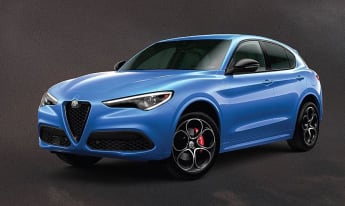
Practicality – How practical is its space and tech inside?
Aside from the new instrument display, there are no other interior changes, so the Stelvio Q remains what it is - a practical, mid-size SUV with the heart of a sports sedan.
The front seats are comfortable and supportive, making it easy to spend an entire day behind the wheel while still offering good support at speed on the racetrack.
Small item storage is adequate, with a pair of cupholders, a spot for the key to sit (if you need to take it out of your pocket or bag), bottle holders in the door pockets and a lidded console box with a wireless smartphone charging space.
.jpg)
The console box also includes a pair of USB ports and an auxiliary jack.
The rear space is on par with what you can expect from an SUV of this size, not offering any obvious advantage over the likes of the Audi Q5, BMW X3 and Mercedes-Benz GLC.
It’s an SUV best suited to small families with slightly older kids, as you’d struggle to comfortably fit a rearwards-facing child seat or three teenagers in the back.
Naturally, it’s also a tight squeeze to get three adults in the back, but with limited rear legroom if you’ve got tall front seat occupants and slightly compromised headroom because of the swooping roofline.
The boot is respectable size for this class of SUV, too, measuring 525-litre (VDA) with a puncture repair kit instead of a spare wheel and tyre.
While it lacks some depth and won’t fit boxy items because of the shape of the tailgate, the boot floor is nice and wide and will take multiple suitcases (based on our previous testing).
.jpg)
Under the bonnet – What are the key stats for its engine and transmission?
Nothing has changed here - at least for Australian-bound examples of the updated Stelvio. In selected markets (Europe, the Middle East and China) Alfa Romeo has bumped the power to 382kW, but everywhere else will have to make do with the same 375kW/600Nm as before.
Which is fine, because it’s still a cracking engine, a 2.9-litre twin-turbo V6 unit with Ferrari heritage in its design DNA. Few other SUVs can claim such an illustrious origin for an engine.
The engine is paired to an eight-speed automatic transmission and all-wheel drive system, which gets a new mechanical limited slip differential.
It’s worth noting that even though Australia will miss out on the more powerful version of the engine it doesn’t make any difference - on paper at least - with the 0-100km/h time the same 3.8 seconds regardless of final kW output.
.jpg)
Efficiency – What is its fuel consumption? What is its driving range?
There hasn’t been any official confirmation of fuel economy changes for this updated model, but given its unchanged engine and transmission it’s likely to remain at 10.2 litres per 100km.
That’s obviously pretty thirsty, even for a family-sized SUV, but is to be expected given the performance focus of the Quadrifoglio. For those worried about fuel efficiency, there are other - more frugal and less powerful - models in the range to consider.
With its 64L fuel tank the Stelvio Q has a theoretical driving range of approximately 625km. On our test drive across France the Stelvio was relatively efficient on the motorways, but getting an accurate trip computer reading was tricky as fuel consumption was obviously dramatically increased during our time on the racetrack.
.jpg)
Driving – What's it like to drive?
As you’d expect from an Italian performance car the Stelvio Quadrifoglio is an exciting car to drive at speed. Our test drive began with a high-speed run at the Autodrome de Linas-Montlhéry, a historic racetrack on the edge of Paris, before a lengthy drive across French motorways and back roads.
While not everyone will take their Stelvio Q to a track day, it was a worthwhile experience because the elderly Montlhéry circuit was more representative of driving on a patchwork Australian road than your typical billiard-smooth racing circuit, so it was a good venue to explore the limits of the car in a safe environment.
The rougher and dirty tarmac of the track felt similar to the surfaces you'll find in rural Australia, with trees hanging close to the edge of the road.
.jpg)
With long straights and a variety of undulating and sweeping bends, as well as some slower changes of direction and a pair of chicanes, the track would present a demanding test for any performance car.
The Stelvio Quadrifoglio performed impressively well. Naturally, given its Ferrari links, it’s a very lively and responsive engine, that revs freely and offers plenty of punch whenever you need it.
On the track the Stelvio had no trouble powering down the straights and we hit nearly 200km/h. Which isn’t likely to come in handy on the school run, but it speaks to the SUV’s genuine performance car credentials.
.jpg)
It was surprisingly agile and responsive in the corners, too, feeling very direct and allowing us to push quite hard despite some body roll; which is understandable given its height.
Where the Stelvio struggled on track was the braking, with several big stops creating that distinctive smell of hot braking hardware.
While that’s only likely to be an issue for anyone taking their Stelvio on a race circuit run, it does suggest an aggressive run down a twisty mountain road or repeated big applications could be a test for the SUV.
.jpg)
Our road trip was more representative of what most Stelvio Q owners are likely to do, taking in the countryside and enjoying the drive. In these circumstances the Alfa Romeo shines, scything its way through flowing bends with precision and poise.
The demands of such a dynamically capable chassis means the ride is on the firm side, so it can feel busy at times on less-than-perfect surfaces.
But that’s no deal-breaker because it’s an expected trade-off for such a performance-orientated vehicle.
Warranty & Safety Rating
Safety – What safety equipment is fitted? What is its safety rating?
Officially, final specifications for this updated model aren’t revealed yet but there’s no reason to believe there will be any major changes.
Beyond the six airbags, the Stelvio Q gets a lengthy list of standard safety equipment, including most of the modern active acronyms.
.jpg)
That means ESC (electronic stability control), ABS (anti-lock brakes), EBD (electronic brake-force distribution) and AEB (autonomous emergency braking).
There’s also lane departure warning, blind spot monitoring with rear cross-traffic alert, active cruise control, front and rear parking sensors and a reversing camera.
The Stelvio received a maximum five-star ANCAP rating, but it must be noted that was back in 2017 and testing criteria has changed since then.
Ownership – What warranty is offered? What are its service intervals? What are its running costs?
Alfa Romeo switched to a five-year/unlimited kilometre warranty in 2022, so the Stelvio Q will be covered under that.
Servicing intervals are 12 months or 15,000km, whichever comes first. Over the first five years/60,000km it will cost you $6644 to get the Stelvio Q serviced by Alfa Romeo, with the cheapest visit costing $833 and the most expensive running to $2627 (for an annual average of $1329). Those prices are subject to change with the new model year, though.
.jpg)
Verdict
The changes to this updated Stelvio Quadrifoglio are so small and subtle there’s no reason to think that it will have any major impact on sales. It’s highly unlikely would-be Audi SQ5 or BMW X3M buyers will suddenly switch to the Alfa Romeo because of its new headlights.
Not that the changes are pointless, the new headlights and dashboard add functional improvement, while the 100th Anniversary edition elevates the Stelvio Q even more with its extra features.
But that’s not really the point. This is a car that celebrates the last 100 years for the Italian performance brand, one final hurrah for the loyal Alfisti who have loved these petrol-powered creations. This is for them, the die-hards, who have kept this brand alive through its ups and downs.
Note: CarsGuide attended this event as a guest of the manufacturer, with travel, accommodation and meals provided.
Range and Specs
| Vehicle | Specs | Price* |
|---|---|---|
| TI | 2.0L, 8 SPEED AUTOMATIC | $71,720 - $82,500 |
| Veloce | 2.0L, 8 SPEED AUTOMATIC | $62,590 - $71,940 |
| Veloce | 2.0L, Premium Unleaded Petrol, 8 SPEED AUTOMATIC | $63,910 - $73,480 |


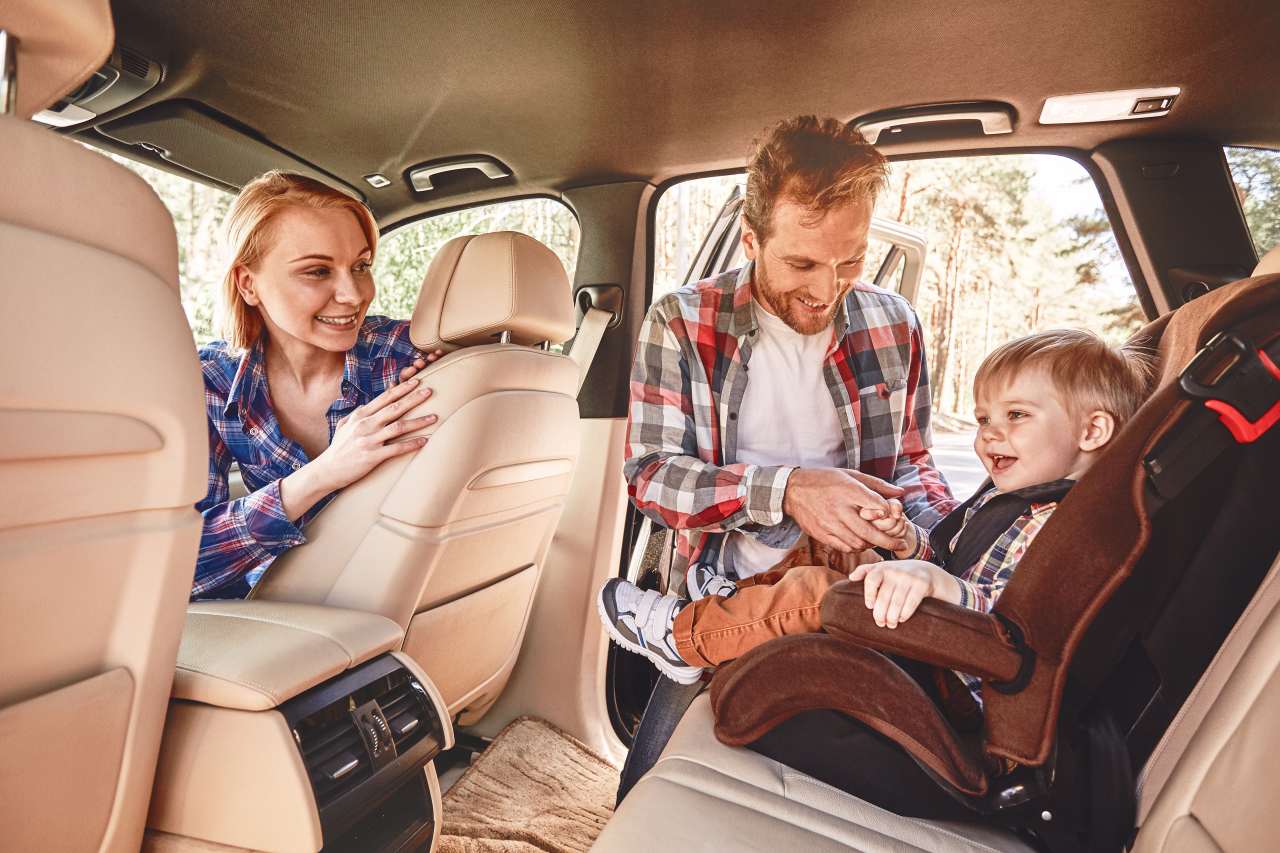
.jpg)

.jpg)
.jpg)
.jpg)
.jpg)
.jpg)
.jpg)
.jpg)
.jpg)
.jpg)
.jpg)
.jpg)
.jpg)
.jpg)
.jpg)
.jpg)
.jpg)
.jpg)
.jpg)
.jpg)
.jpg)
.jpg)
.jpg)




















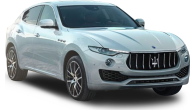


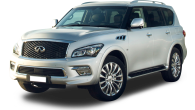




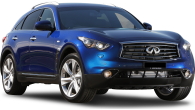






.jpg)
.jpg)
.jpg)
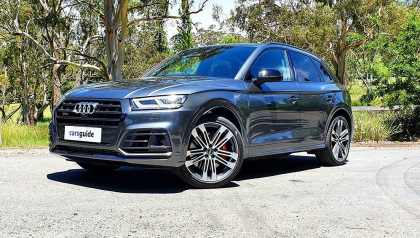
.jpg)


.jpg)
.jpg)

Comments